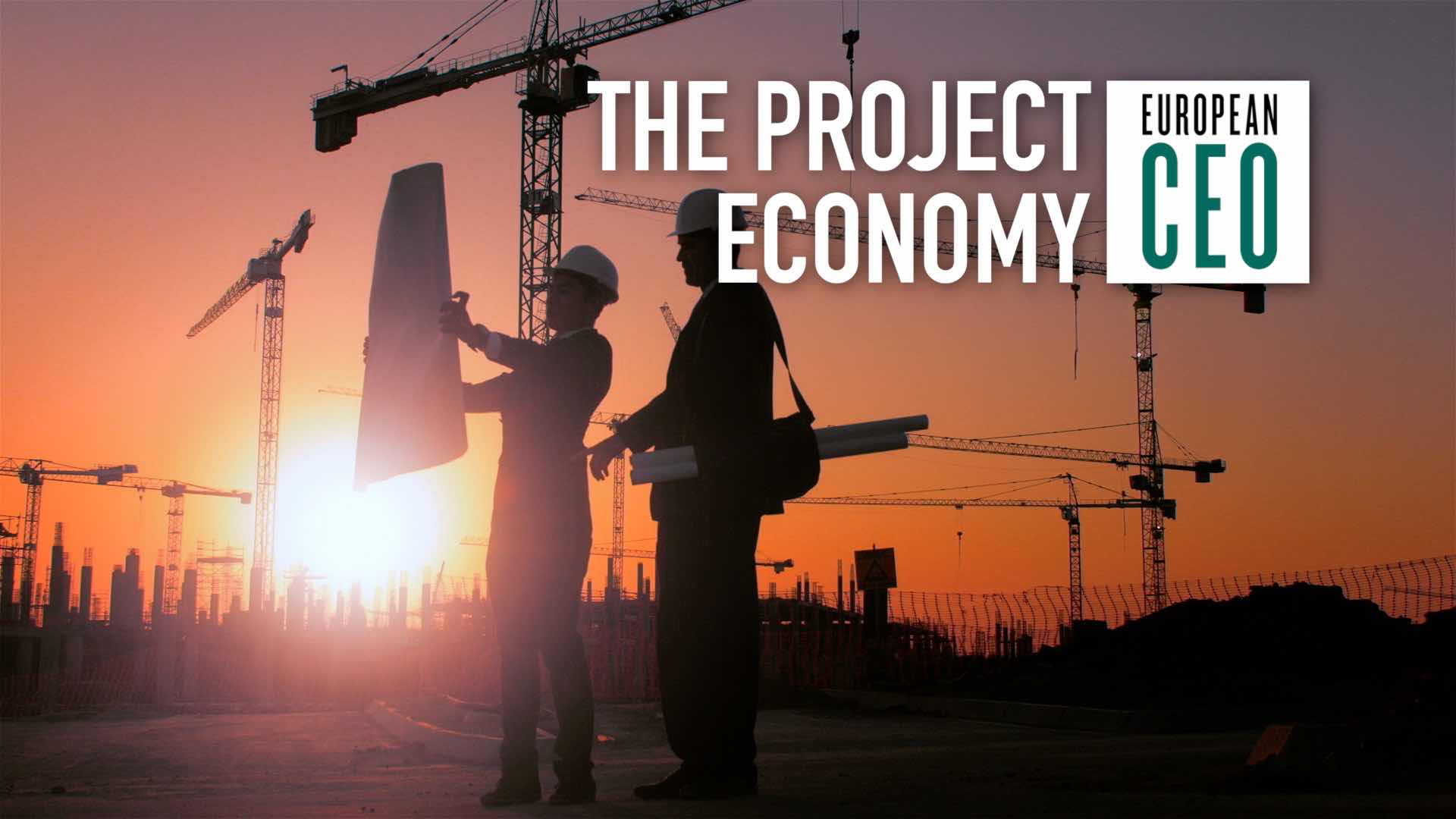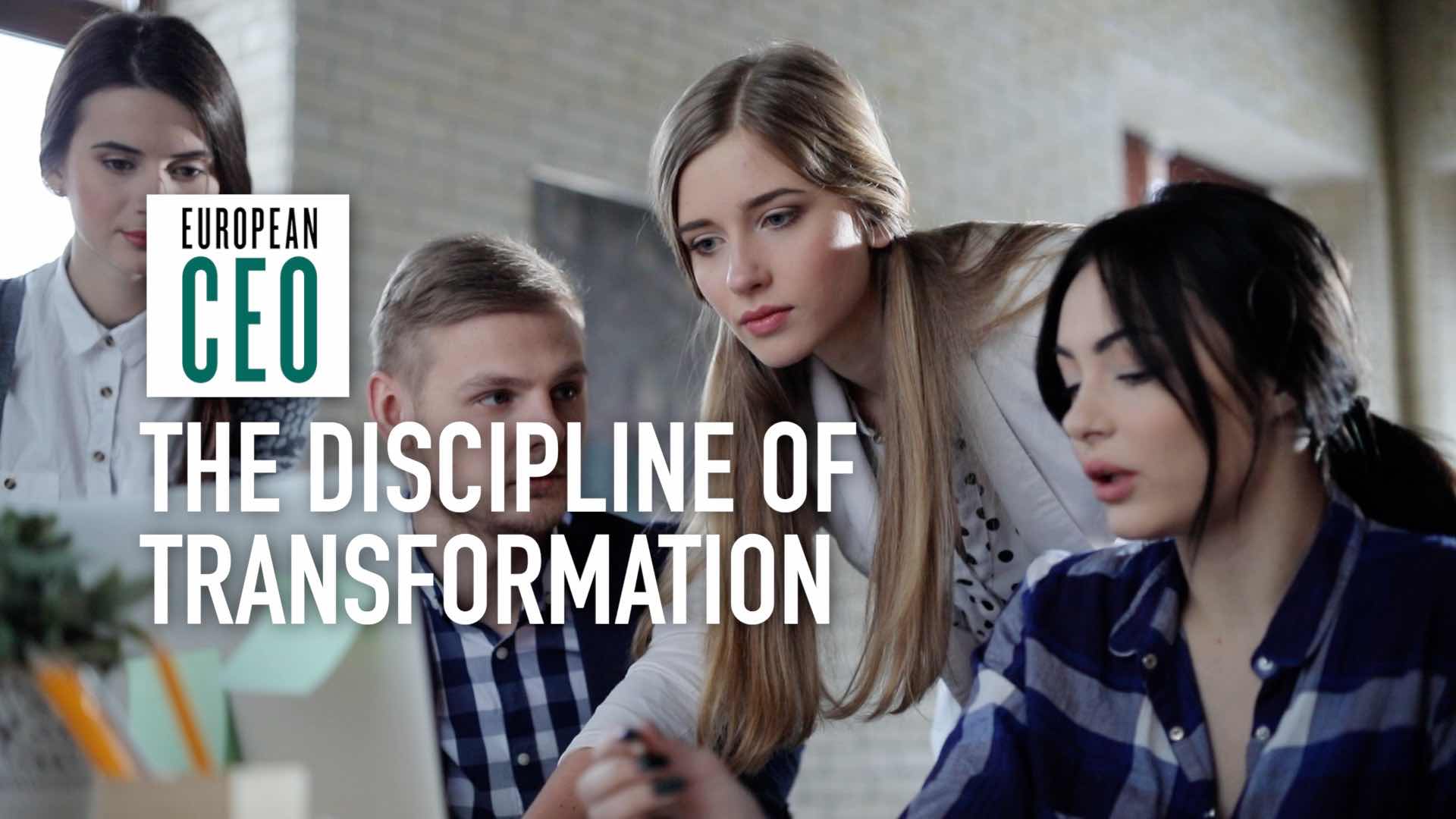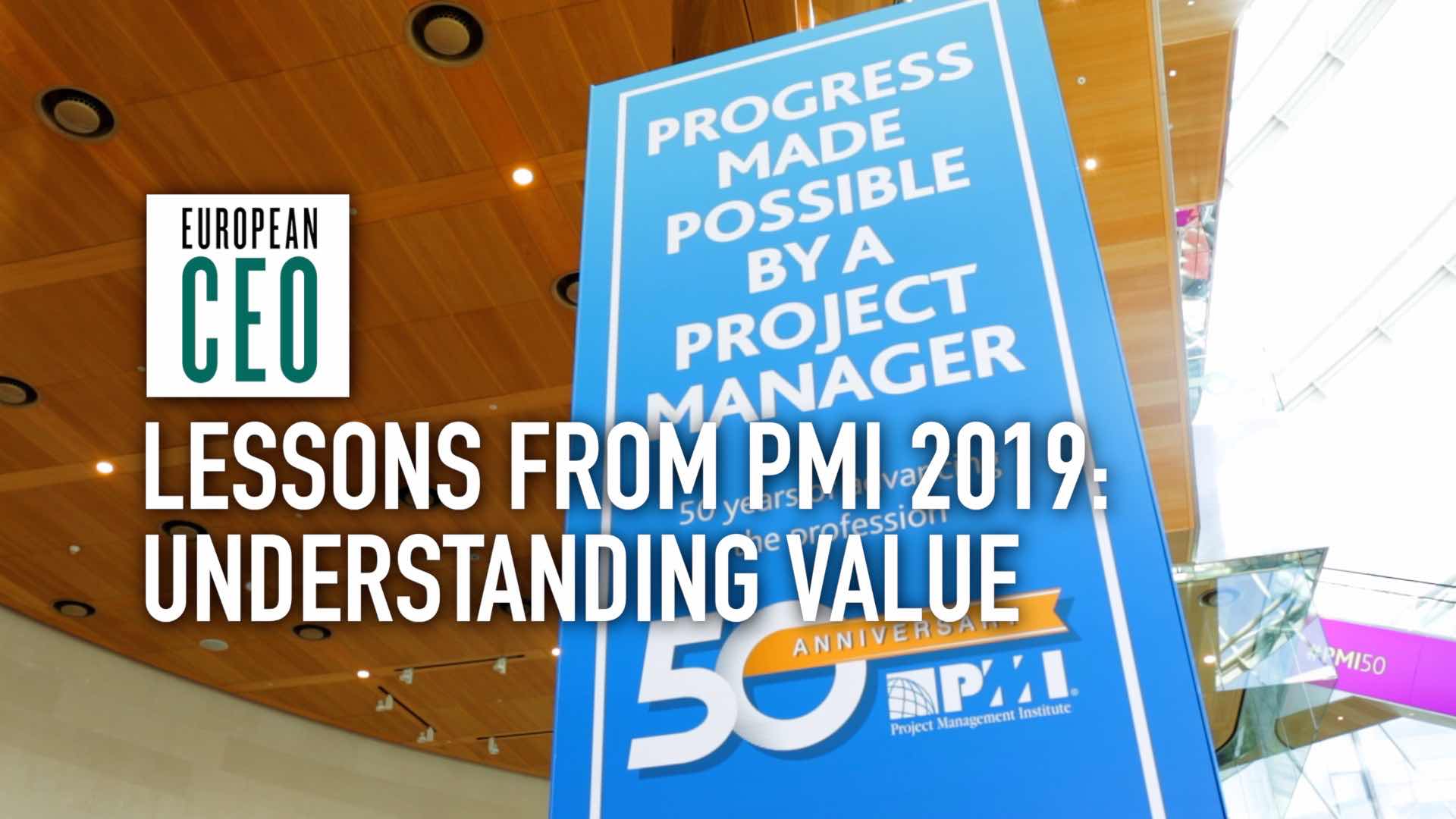European CEO Guide to Project Management – powered by PMI
Our six part video series, powered by the Project Management Institute, explores the organisational competencies that can help your business become a project management champion
Transcript
There are five things that distinguish a project management champion from an underperforming organisation, explains Mark A. Langley, CEO and President of the Project Management Institute. First, a focus on talent development for project and programme managers. Second, organising those managers with Project Management Offices or Enterprise Project Management Offices. Third, a system of executive sponsorship. Fourth, benefits realisation management; and fifth, agility and agile practices. In our six part guide to project management, powered by PMI, Mark first outlines and then dives deep into each of these elements, to help you understand how your business can improve.
Click on the top left of this video to view all the episodes in the series. This page will also automatically play the next part at the end of the current one. Or you can read the transcripts below.
One of the things I continue to be amazed at is how some organisations continue to treat project and programme management as anything but a strategic competency. Because all strategic change happens through projects and programmes.
Part One: Introduction
If you’re not good at project management, you put too much at risk in terms of ultimately delivering on strategy. If my competitor can get to the market faster, more efficiently, with a better product, because they’re more mature in project management; then we’re going to be significantly hurt in the long-term.
And I think that’s a gap that executives are working to close, because they recognise that in the end, it becomes about competitive advantage. And when you start to recognise competitive advantage and risk are in play, then maybe executives start to think more strategically.
There’s really five things that distinguishes a champion from underperformers.
And the first is really a focus on talent development. So just as there’s engineering careers, and information technology, and human resources; there’s a career for project and programme management. They have a very formal, documented approach, with a focus on the skills, competencies and behaviours, necessary to lead their most important initiatives.
The second is really how they organise that. So PMOs and EPMOs. It stands for Enterprise, or just Project or Programme Management Offices. What’s the role of the PMO, how many PMOs should we have? How do they support the functional areas of the organisation, and how do they report back up, importantly, to the executives that are making the decisions, key decisions, around portfolio and investment.
A third area, and one I think is really important, is the Executive Sponsor. Because if you have an engaged executive sponsor, who’s committed to the project, understands the vision, is communicating the value and change in the organisation, all the way through the lifecycle; removing roadblocks, tearing down silos, freeing up resources when they’re needed. Where there’s an engaged executive sponsor, they’ve had higher success.
The next one is what we call benefits realisation management. So we often see projects reported on in newspapers that say this project is over budget and behind schedule by, somefold. But what we recognise is that there’s another critical aspect of the project, and it’s why we do them in the first place. What is the intended benefit from this project? Organisations that are the champions have a mature benefits realisation management process. They get material benefit from it.
And the last one is really an adoption and focus on agility, and agile practices as a means to that. Every organisation is focused on agility; they want to be able to respond to opportunities. The desire to go faster has been an organisation mindset forever. But in project management, agile practices are typically attributed to shorter iteration cycles. And in our champion organisations, they’re much more likely to have adopted agile as appropriate for that organisation.
Project and programme managers play a critical role in the success, not only of individual projects, but also the organisation’s success. Because one leads to the other.
Part Two: Talent Development
It’s really important for an organisation to have a focus on talent development, and a defined career path for project and programme management.
Number one we know that organisations that have defined career paths have greater project success. So if you want to assure your success you should adopt a formal career path; document it in the organisation.
But the other side is, individuals are much more satisfied, and retention of individuals is greater, where there’s a documented, formal career path. Individuals see where they’re moving to next, and they know what’s expected of them, and they can have an ongoing training and development programme towards that – assuming that the organisation supports it in a formal way.
From an organisation perspective, they get to retain their talent, and they get better results.
We focus on what we call the PMI talent triangle: technical project management skills, leadership, and strategic and business management.
So the technical project management skills: schedule management, budget management, earned value; are still absolutely critical. But we also recognise leadership: the ability to negotiate, communicate, organisation change management, conflict resolution. Because we know in projects, things don’t always go according to plan.
And the third area is strategic and business management skills. There it’s around alignment. So a project is more successful when it maintains alignment to the ultimate strategies. So, we look to project and programme managers to see if they understand the organisation’s go-to-market strategy, customer relationship management, do you have the commercial capability to look at and evaluate contracts, to make sure that everything’s aligned ultimately to the organisation’s outcomes?
We know that there’s a talent war. There’s no surplus of talent in the world, globally. Certainly companies compete for talent every day. So if you can have that internal focus on a career path, have on-going training and development, and then retain your talent at a greater rate than you have in the past, there’s significant value for organisations as well.
EPMO or PMO: it stands for Enterprise Project or Programme Management Office, or just Project or Programme Management Office. And it’s the way the organisation organises project management.
Part Three: PMOs & EPMOs
And there’s different roles. They’re actually complementary, EPMO and PMO. I get asked that question often: why do we have one or the other, or both?
Typically we see models in PMOs where they’re responsible for training and development. They’re responsible for standardisation. They’re responsible for reporting, communication. Perhaps portfolio prioritisation. Resource management. What we find also is that many organisations will have business unit or functional PMOs, working within information technology, or we see them in marketing groups, finance and so on. They’re very aligned to looking across that unit and down in the organisation, in terms of implementing major projects and programmes.
The enterprise PMO takes on a different role, which looks across the organisation and reports up. So what they do is, focus on translating the project results into business outcomes and capabilities, and communicating that up to the senior levels of the organisation. So they have a sense of where we’re heading from a business capability or a customer capability, or a product delivery standpoint. And they can make decisions around investment and funding and managing risk at the same time.
One of the reasons that companies need both a PMO and EPMO, or even one or the other, is that we see too often in an organisation that they lack standardisation. So you’ll have, in one business unit they evaluate projects and programmes on a different set of metrics. They have a different set of practices. And when trying to work across the organisation that standardisation is lacking.
Also the metrics for success are different. Which may be appropriate, but if there’s no visibility, we’re making investment decisions in a portfolio, perhaps on different criteria. So having these in place enables the organisation to have standardised practices. It maintains a career with qualified project and programme managers developing the skills, competencies and behaviours that are necessary for the entire organisation.
And ultimately it helps the senior level make decisions around where do we want to invest or prioritise our resources.
One of the critical roles around project and programme management is the executive sponsor. And the executive sponsor is the individual or group of individuals that actually are the champions of that project or programme.
Part Four: Executive Sponsorship
They play a critical role for several reasons. The first is, they really can break down silos and roadblocks to organisation resources necessary to achieve the ultimate goals of the project or programme.
They also help communicate the business case of the project or programme. So the ultimate result. And that’s a critical role, because organisations are very busy; organisations deal with many distractions. But if you can keep a focus on the rationale, the business outcome of the project, the value it’s ultimately going to deliver, it’ll attract and retain the resources it needs to be more successful.
And then finally, they actually communicate to the rest of the organisation. So, back up into the c-suite, around the status – but in business terms. And that’s a critical role in the organisation.
We did a regression analysis every year against all of our research, and the number one factor for project success is an engaged executive sponsor. So the role cannot be overestimated in terms of its importance. If I were looking to do only one thing, I’d formalise the role of the executive sponsor in an organisation. Define what his or her duties are, or if it’s a committee, what the committee’s duties are. And make sure that the organisation is very clear on that.
In terms of specific competencies, skills, behaviours of an executive sponsor, they include communication of course: one of the key roles is being able to communicate. The ability to influence, motivate. Create a vision. So as a sponsor, if I’m responsible for the business case, there has to be a clear vision that we’re aligned to, and that we can maintain alignment to.
So, motivating the team. Creating a vision. Aligning the team to that vision. Influencing and communicating. As well as having negotiation and change management capabilities. So you want to be able to, in the face of friction or challenge in the organisation, can you negotiate successfully across the organisation to be able to keep that project or programme on track.
They’re among the critical skills of a good executive sponsor.
Too often we’ve evaluated the success and failure of projects and programmes on time and budget. They’re critical; but it’s equally critical to an organisation, the ultimate outcome that we wanted from that project or programme. And increasingly organisations are starting to recognise that.
Part Five: Benefits Realisation Management
Ultimately we want to attain something from the project or programme. And if we haven’t identified it at the beginning of the project or programme, we know from our research we’re less likely to actually achieve it.
So mature organisations, who have mature benefits realisation practices, establish the benefits in the beginning of the project. And too often what we find in our research is that organisations wait to the end and say: did we get what we wanted? But they don’t know what they wanted in the first place. They actually never define the benefits, or they define them in a way that couldn’t be measured. So you think about it: we’re doing this project because we want to improve customer satisfaction. But it’s never been defined in a way that has a metric assigned to it and then tracked and ultimately evaluated. Organisations are recognising that they need to be more disciplined in that.
When it comes to improving benefits realisation, it’s really around formalising it. Having it be consistent across the organisation, and also standardising in a way that you can repeat and have greater success rates.
It comes to a level of discipline and clarity. So the definition at the initiation standpoint, and the implementations around that tracking and management of it. And then ultimately on delivery it’s around sustaining those benefits. So, do you have a process that sustains it. And these are some practices that we see in organisations, on not only initiation, not only implementation, but also on sustaining those benefits.
Organisations that have mature practice of project or programme management, aren’t afraid of project failure. Ending a project or delaying a project is sometimes the best action they can take, because it’s not going to deliver ultimately on the intended value or benefits of the project. So, having the ability to measure those benefits early, and judge the ultimate viability of the project, is absolutely critical.
A question I get asked all the time is, what is ‘agile?’ Because everybody wants to be agile, right?
Part Six: Agility & Agile Practices
From a PMI perspective, from my perspective – having worked as long as I have – the desire to go faster has been an organisation mindset forever.
In project management, agile practices are typically attributed to shorter iteration cycles. It’s more like lifecycle management of a project. So how short is your iteration, in terms of project outcomes? And what we see is organisations starting to break down major projects and programmes where they would’ve perhaps attempted to complete them end-to-end, all the way through; into smaller pieces of project work. As they do that, they start to use agile practices, which help them iterate more.
Agile practices are commonly used when you don’t know the outcome, the absolute requirement. You have an intent or direction, so you use agile practices to iterate in smaller pieces of work, and then check with the customer along the way.
In working with organisations around the world, one thing we’ve found is, regardless of whether they’re a traditional project management organisation, or they’re an organisation that’s completely adapted to agile practices. What we see is a convergence. Because it’s not an either/or discussion. If agile practices can help you in your organisation, some organisations are doing that, but they still need to maintain some of the more traditional project management elements. And we see organisations now trying to combine the two.
Champion organisations are more likely to have already made progress in that. So it’s an enabler of their business. They’ve focused more, and they actually now have both traditional and agile practices, to the extent it makes sense for that organisation.


 The Project Economy: What it means for the world, business, and you
The Project Economy: What it means for the world, business, and you PMI: There’s a lot of work to be done in the discipline of transformation
PMI: There’s a lot of work to be done in the discipline of transformation Understanding and delivering value | PMI EMEA Congress 2019
Understanding and delivering value | PMI EMEA Congress 2019